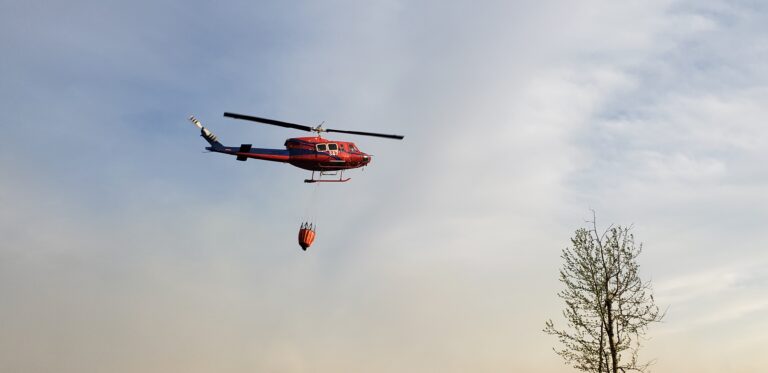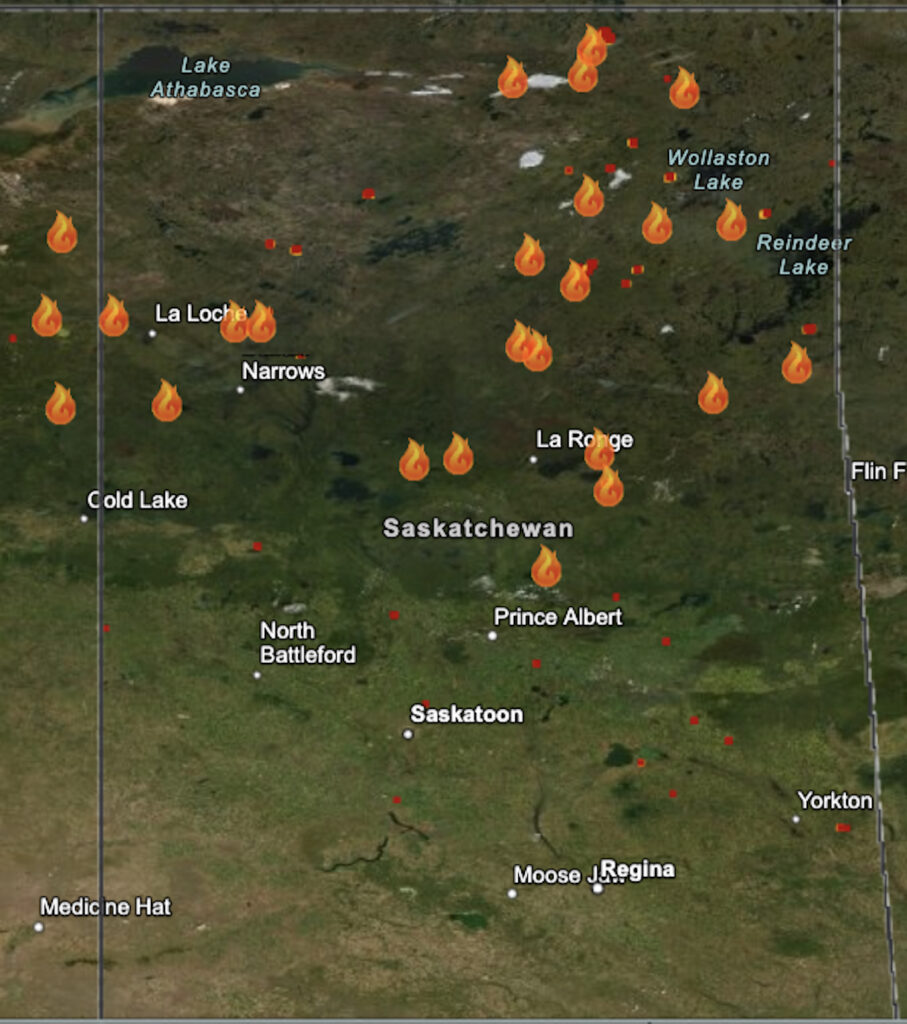
The Saskatchewan Public Safety Agency (SPSA) says three fires are within 20 kilometres of a northern community amid a record-breaking heat wave engulfing Western Canada.
A province-wide fire ban remains in effect at least until Monday when the SPSA will re-evaluate. The fire ban will continue to span the entire province for all Crown lands.
There should be no open burning and no fireworks on provincial Crown land — which includes provincial parks. No burning permits will be issued until the fire ban is eventually lifted.

Residents of the northern communities of Stanley Mission, Dillon, Michel Village, Stony Rapids and Black Lake are advised to follow standard precautions in case the situation worsens.
“We have emergency services officers who work with community leadership when hazard increases from a wildfire or any other natural threat. Then we can provide them real time information of their risk and what proactive measures they can take,” SPSA vice president of operations Steve Roberts said.
“All three of those fires are getting our highest priority because of their proximity (to communities)… All of those are full response fires because of … potential threat (to the communities) and are being resourced with ground crews, aircraft and heavy equipment.”
On Thursday, Roberts said the Pothole Fire measured 360 hectares nearby to the community of Stanley Mission in the northeast. The Lock Fire was at 5,190 hectares in the vicinity of Dillon and Michel Village in the northwest. Further north, the Stallard Fire was at 18 hectares nearby Stony Rapids and Black Lake.
Residents should be prepared in case they need to take “more extreme” safety measures if the risk escalates. Those measures could also be rolled back if the risk goes down.
“The two messages are being prepared and being cautious,” Roberts said.
“Many communities have put on their own municipal fire bans in sort of alignment with the provincial ban… For wildfire, or any other emergencies you could be exposed to, individuals and communities need to be prepared should the threat rise.”
So far the SPSA has not initiated any evacuation alerts. Some residents of Dillon were relocated by the community for air quality and medical conditions. A fire near Turnor Lake was also extinguished before it reached the community.
Roberts said all residents should be prepared to stay where they are and support themselves if access is cut off for a period of time. People should know what to take with them if asked to evacuate and have their documentation ready to go in case of emergency.
“We currently have 30 active fires — that’s an increase of 16 fires since last week at this time. Currently 232 fires so far this year which is 30 fires more than our five-year-average,” Roberts said.
“Fires will vary year to year and month to month as we go through the season. This is a concern because of the number that are currently here. A lot of it has to do with where they’re located, the complexity of the fires and the numbers at any given time.”
Roberts said the increase in the five-year-average comes after two years of low fire numbers in Saskatchewan, and does not represent a big difference in the numbers.
34 Saskatchewan communities broke temperature records last Friday according to Environment Canada. While the SPSA has taken advantage of some cooler days to get a handle on the situation, Roberts cautioned that weather will continue to stay hot and dry for the next three to five days.
Increased storm activity predicted after that could come with its own set of problems.
“We will get precipitation, but that precipitation will be with lightning in most cases, further escalating our concerns,” Roberts said.
“With increased complexity on these fires they will require more effort because of the conditions and then we also have the risk of more lightning fires that may start to occur.
“It is one of the primary reasons why we continue with the fire ban and that’s to avoid unwanted human caused fires.”
The Briggs fire that saw Cameco evacuate all non-essential personnel from the Cigar Lake uranium mine remains active but has moved away from the vicinity of the mine site.
“That fire has been managed and the mine site is secure. Fire did burn the majority of the perimeter around the mine site but no structures were damaged,” Roberts said.
“The mine is free to continue operations as they see fit.”
Roberts said that any risk of fires threatening industrial operations, communities, homes and property are “assessed as part of the management plan for each and every wildfire.”
